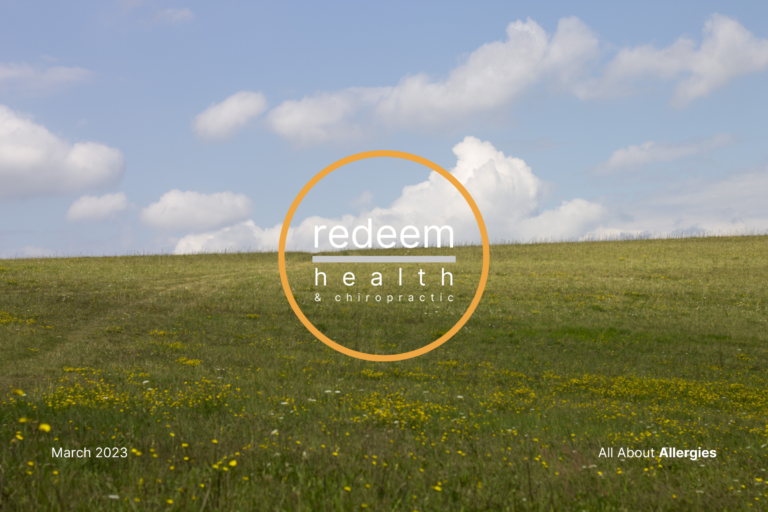Allergies: What They Are & Their Causes
An allergic reaction occurs when the immune system attacks a [usually] harmless substance called an allergen that gains access to the body. Therefore, the immune system calls on a protective substance called immunoglobulin E (IgE) antibodies to fight these invading allergic substances. Even though everyone has some IgE, an allergic person has unusually large army of these IgE defenders — too much of a good thing.
As a result, the body’s mast cells are often injured during the fight between igE antibodies and the pollen or allergic substance. When a mast cell becomes injured, it releases chemicals into the tissues and blood, one of these chemicals being a histamine. These chemicals cause the body to react because they are irritating and can cause itching, swelling, and leakage of fluid from the cells. Through different mechanisms, these allergic chemicals can also cause muscle spasms and can lead to lung and throat tightening, such as asthma and laryngitis.
Any substance can cause an allergy if exposed to a person in the right way. But for all practical purposes and with few exceptions, hay fever is caused by proteins. Many trees, grasses, and weeds produce extremely small, light, and dry protein particles called pollen, which is spread by the wind and inhaled. Because of this, a susceptible person frequently comes into contact with protein from plants. These pollen particles are usually the male sex cells of the plant and are smaller than the head of a pin! This can stress your body’s systems, but it doesn’t have to! A healthy body can adapt to and recover from stress — even repeated “attacks” by pollen and flowering trees.
Health Begins with Resilience
Resilience is the secret to health and has two components:
- The body’s ability to deal with and adapt to stress, which is the toughness component.
- The body’s ability to recover from stress – this is called the elasticity component.
Hay fever and allergies are not the problem; they are simply a normal physiological response to a body that is under stress and away from homeostasis for too long. If hay fever or allergies are viewed as abnormal, we will treat disease as the issue and will only ever be able to cope with it – and coping is not what we want! To overcome anything, including allergies, we must identify the real culprit, which is a body that is stuck in a stress response.
Health Continues in the Gut
Your gut is the only thing standing between us and pollen!The gut is lined with epithelial cells that serve as a filter to keep toxins out of the bloodstream, but stress on the body in the form of environmental toxins, harmful chemicals in our food & water supply, too much sugar, negative thoughts & emotions, food additives & preservatives, hormone disrupting chemicals in our personal care products destroy those epithelial cells. When that happens, toxins enter the bloodstream and travel to all parts of the body – therefore, the immune system is activated and starts “attacking” these foreign invaders. Inflammation is step one when destroying toxins, and this inflammation can create allergic reactions to things such as pollen and dander.
Health is Maintained on the Table: Food, Nutrients & Herbs to Fight Hay Fever
Kiwifruit contains more vitamin C than oranges do! The yellow variety of kiwi is best. Vitamin C is an effective, natural anti-histamine and anti-inflammatory. It also supports healthy immune function and protects from secondary sinus infections and asthma. Kiwifruit also contains binoflavonoids and antioxidants that complement Vitamin C’s effect in the body. They also act as potent anti-histamines and anti-inflammatories.
Pineapple is a rich source of bromelain, an enzyme with strong systemic anti-inflammatory effects, which helps decrease mucous, inflammation and nasal congestion. It is also great at clearing lung congestion and healing lung tissue.
Commonly used in Middle Eastern and Asian cuisine, this spice contains curcumin, a phytochemical with powerful antioxidant and anti-inflammatory actions that are comparable to steroidal or nonsteroidal anti-inflammatory drugs. Curcumin has anti-allergy properties, which inhibit the release of histamine. Turmeric is most often used in dried form, but try fresh turmeric, which looks similar to a small ginger root. Peel a section and grate, then add about two teaspoons to rice dishes, stir fries or soups. Just make sure to wear gloves, as turmeric will stain anything it touches!
Having an onion a day can keep your hay fever at bay. Onions are packed with the flavonoids quercetin,a powerful antioxidant, anti-inflammatory, and natural antihistamine. Eat red onions raw and tossed through salads or on sandwiches or in cooked dishes. Quercetin is also found in apples, kale, red grapes, berries, cherries and parsley.
The vibrant color of carrots, pumpkin, apricots, mango, and papaya indicates high levels of beta-carotene, which is converted to vitamin A in the body – green leafy vegetables are also an excellent source, as their orange color is masked by the green of their high chlorophyll content. Vitamin A is crucial for healthy mucous membranes throughout the respiratory tract. It also helps promote healthy immune function, prevent secondary respiratory infections, and reduces inflammation.
Probiotics contain beneficial bacteria and taking them can help keep your gut healthy. A daily dose of probiotics can help those who suffer from hay fever restore a more balance immune response to pollens. Without a healthy balance of good bacteria in our guts, our immunity is likely to be compromised, making us more susceptible to allergies of all types, and specifically hay fever. Studies have shown that nettle tea can help relieve inflammation of the upper respiratory tract and ease nasal congestion, sneezing, and itching. Drinking licorice tea can also alleviate symptoms of hay fever. Licorice root has a soothing effect and helps to reduce irritation of the respiratory tract.
Foods to Avoid:
Limit or avoid cow’s milk and other dairy products because they can increase the production of mucus in the respiratory tract and make the nasal congestion of hay fever much worse. Try alternatives like rice, almond, cashew, or coconut milk. Many people say they crave sugar when they have a secondary infection from hay fever. This is the worst thing you can consume! Sugar weakens the immune system, destroys the gut lining, and stresses your body’s systems.

